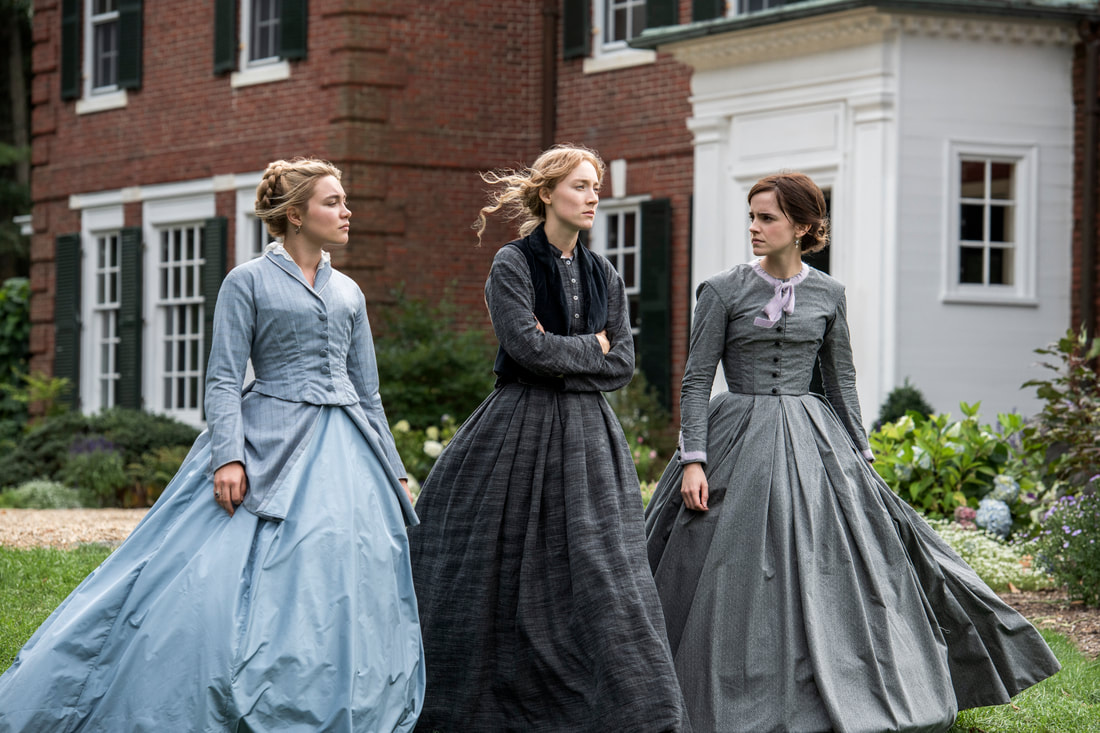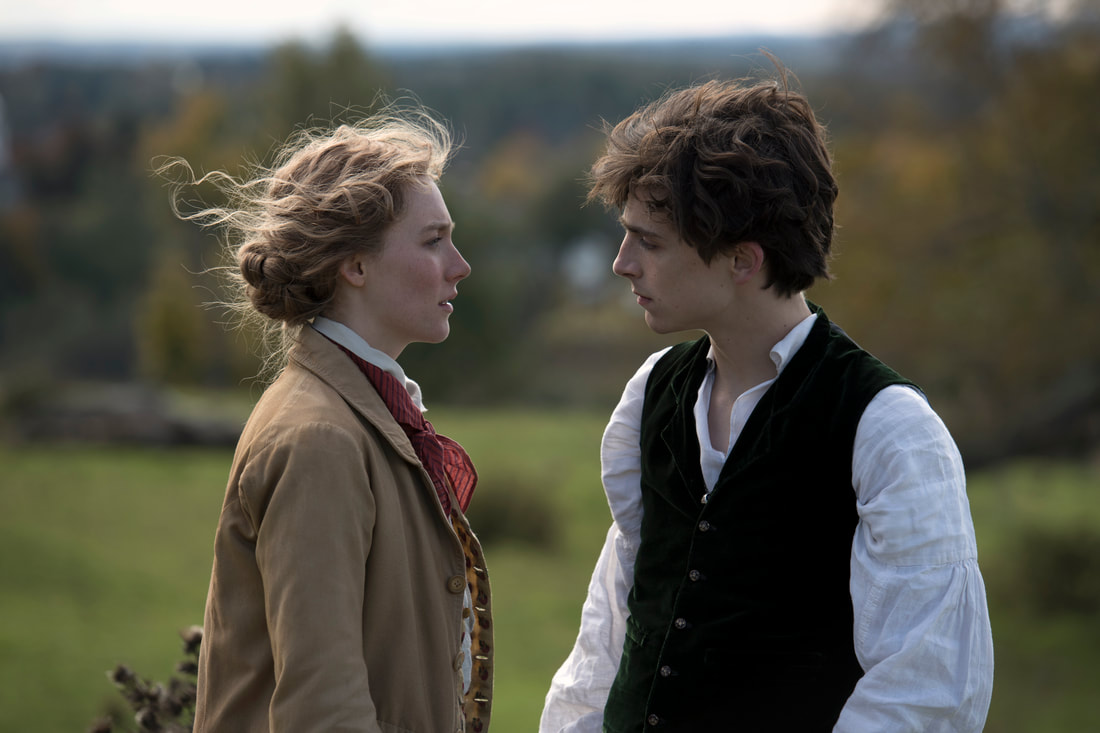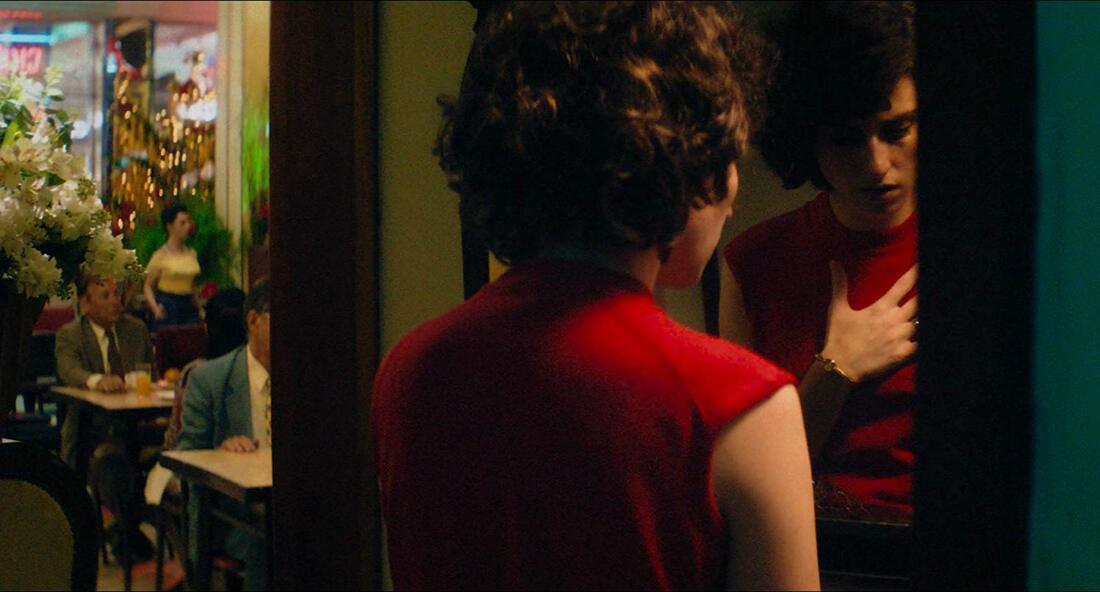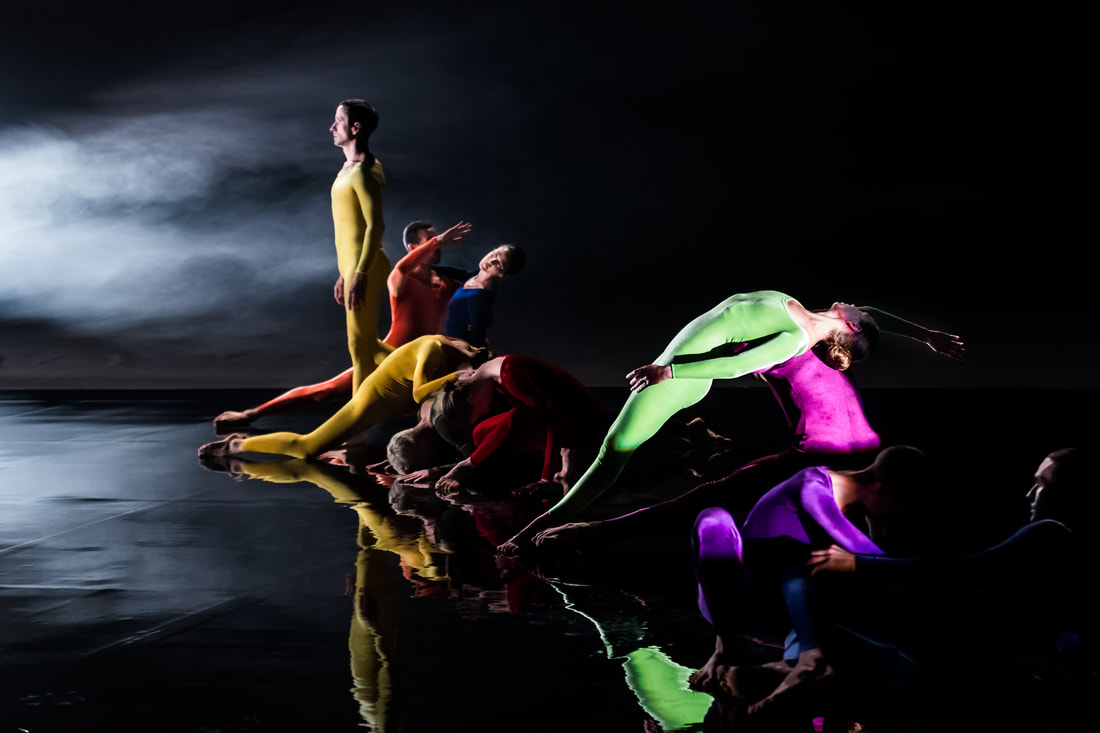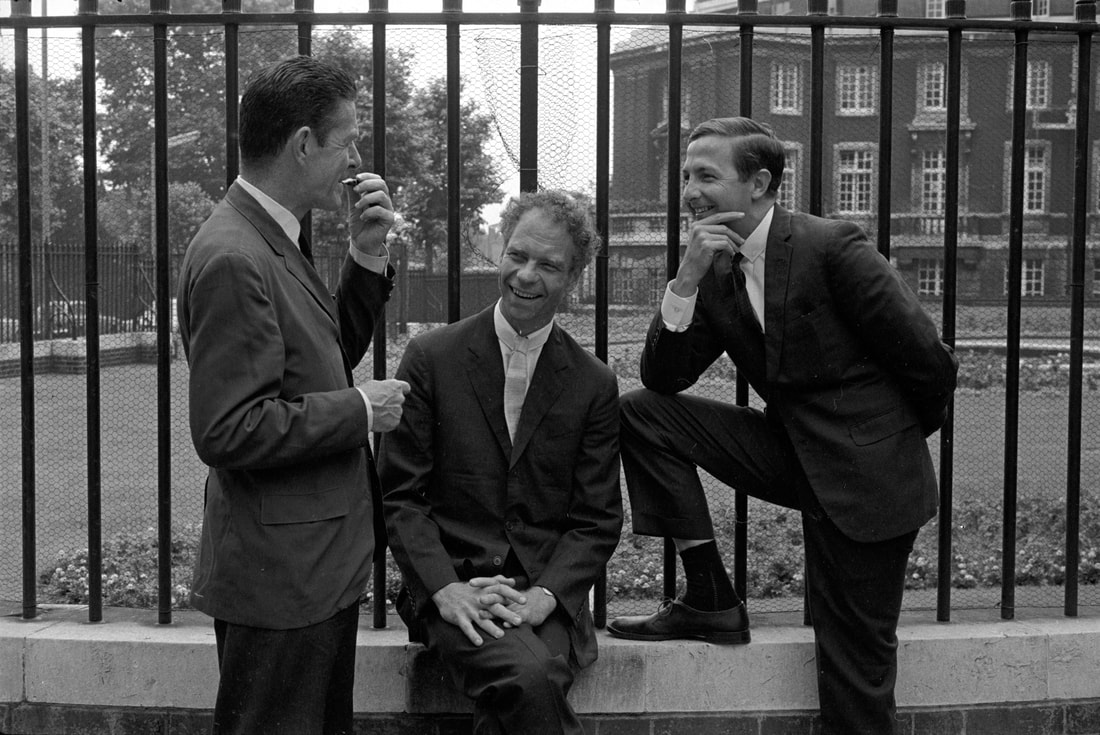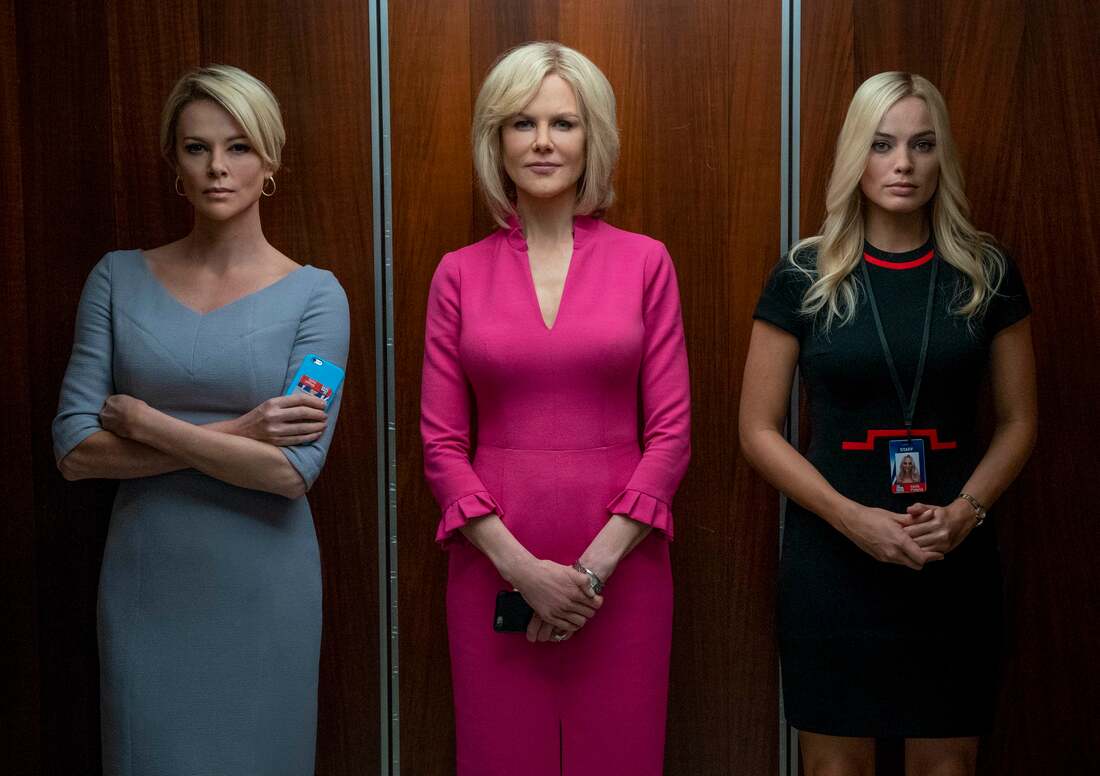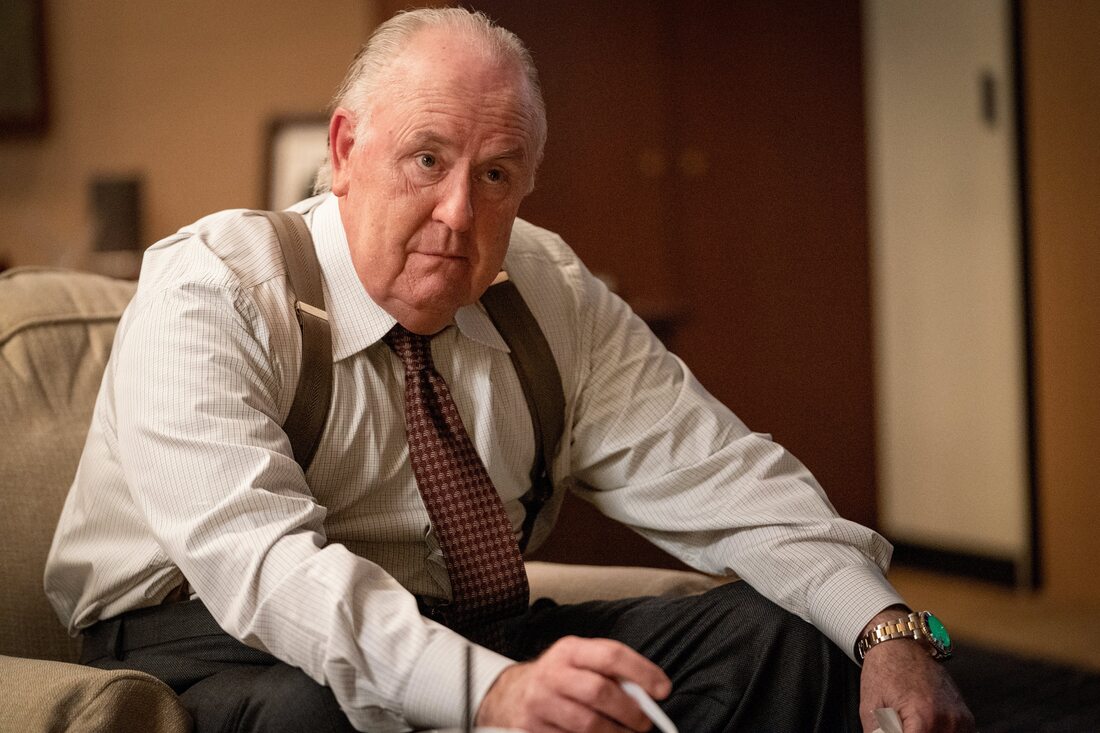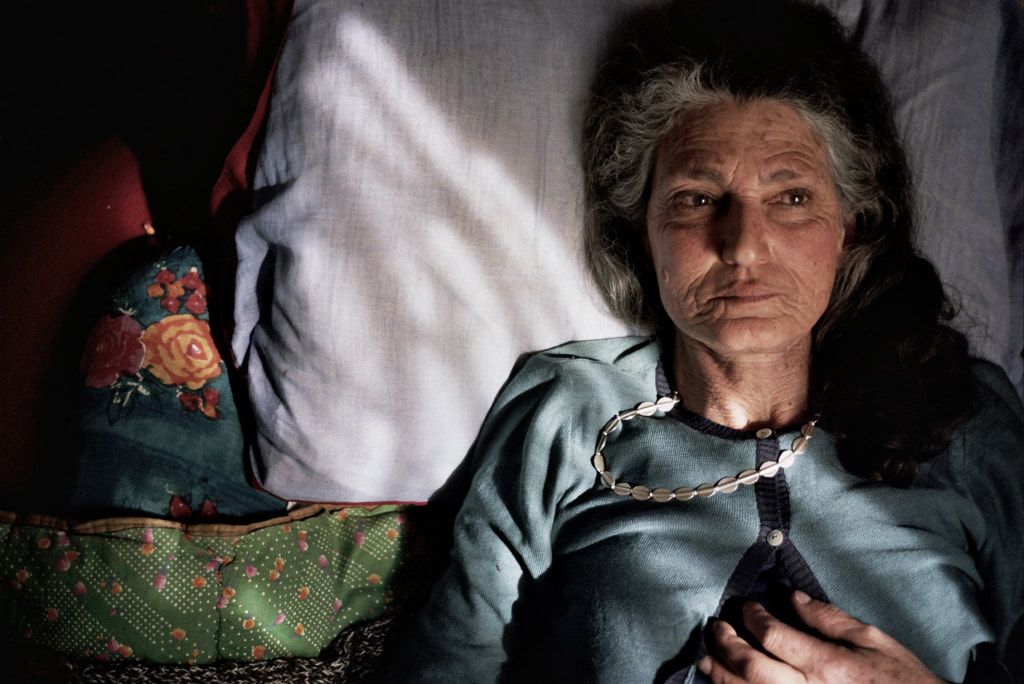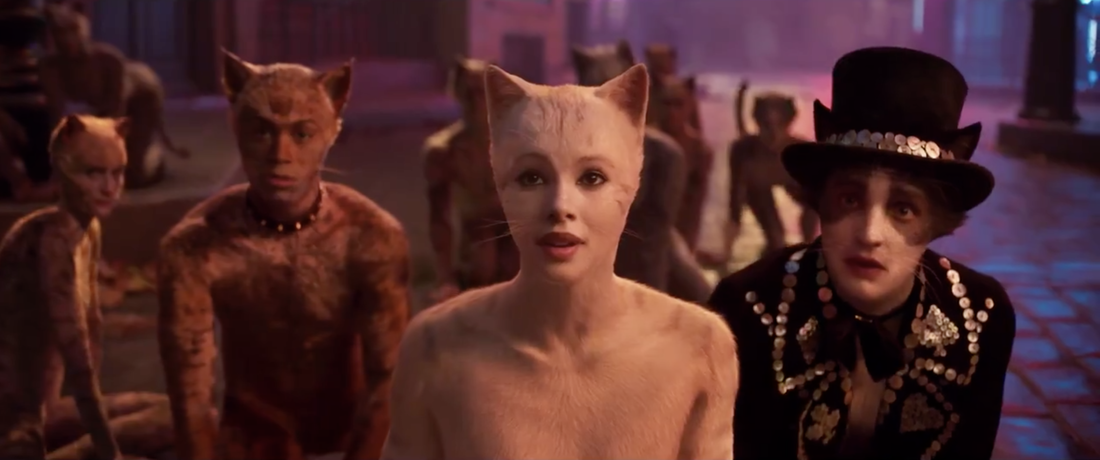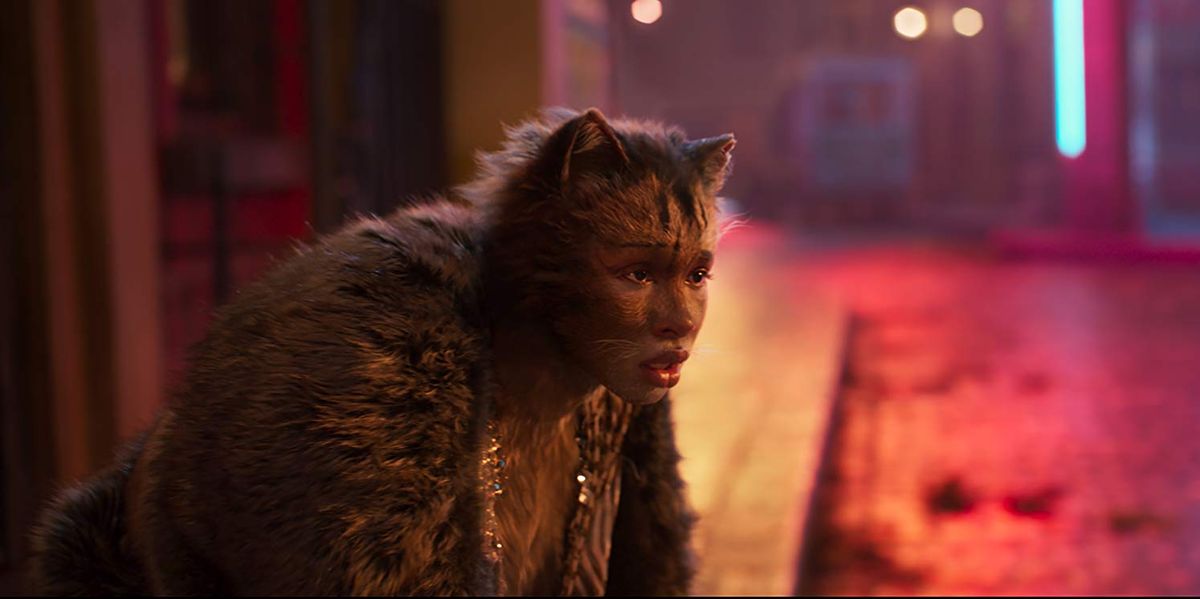|
Review by Sean Boelman Little Women, Greta Gerwig’s highly-anticipated follow-up to her solo feature debut Lady Bird, is the latest adaptation of Louisa May Alcott’s acclaimed novel of the same name. However, even though Gerwig has an obvious admiration for the source material, the adaptation fails to prove a reason for its existence, ultimately feeling like little more than a surface-level interpretation of these themes. The film follows four sisters, Jo, Amy, Meg, and Beth March, as they come of age in America in the 1800’s. As the classic coming-of-age story, the tale of these four young women is obviously very compelling, hence why it has been adapted so many times. Gerwig even attempts to make the story her own by telling it in a nonlinear way and adding a meta perspective to the events. Still, despite these flourishes, one can’t help but feel like this movie is much of the same, and that it has been done better in the past. This stories feminist themes always have been and always will be important and universal, but where Gerwig fails is that she is unable to draw the comparison between what these young women in post-war America are experiencing to what young women across the world are feeling today. Additionally, the film feels very uneven in terms of its pacing. Although there are some very funny scenes sprinkled throughout, and some very touching ones as well, there are a lot of moments that fall flat, often due to the dialogue. Gerwig’s dialogue is admittedly very ambitious, having a particular meter, but it often seems like some of the actors have a hard time handling the poeticism of their lines. Gerwig also fails to capture some of the subtleties of the characterization in Alcott’s work. In the past, all of the sisters have been equally developed, or at the very least, all sympathetic. In Gerwig’s version, Jo very much steals the spotlight and is the most compelling character, with Amy coming off as annoying and Meg and Beth being relegated to subplots. It’s disappointing that there wasn’t more balance in this regard.
Saoirse Ronan is as wonderful as always in her leading role as Jo, but she is the only one of the leads who seems to be able to hold her own. Florence Pugh, Emma Watson, and Eliza Scanlen all struggle with capturing the personality of their characters in a way that feels honest. They are surrounded by a wonderful supporting cast including Tracy Letts, Laura Dern, Timothée Chalamet, Meryl Streep, and Chris Cooper, but all of them feel sadly underused. Visually, Gerwig does some interesting things with the film, particularly with the use of lighting. Many shots use candlelight in a way that gives the film a quiet glow. The production design and costuming is quite strong too, setting the period very well. And as always, Alexandre Desplat delivers a score that is absolutely gorgeous and fits the movie perfectly. Though done with noble intent and lots of style, Greta Gerwig’s adaptation of Little Women simply doesn’t do enough to stand out on its own. Viewers who are already familiar with the source material will likely find themselves bored by this straightforward retelling of a well-known story. Little Women opens in theaters on Christmas Day. Rating: 2/5
0 Comments
Review by Sean Boelman Invisible Life, from Brazilian filmmaker Karim Aïnouz, is a new melodrama based on the novel The Invisible Life of Eurídice Gusmão. Thanks to a compelling story and a phenomenal cast that plays it with a lot of subtlety, this manages to resonate on an emotional level much more than one would expect. The movie tells the story of two once inseparable sisters from a conservative family in 1950’s Rio de Janeiro as they go their own ways, trying to find themselves and hold on to their dreams. Although the story sounds relatively generic on paper, and many of the beats lean heavily into melodrama, Aïnouz and co-writer Murilo Hauser approach the events in a way that feels grounded and heartfelt. After the two sisters split apart in the beginning of the film, the rest of the runtime is spent cutting between their stories. The movie does span a period of years, so the timeline does start to become a bit messy, but the individual vignettes are very interesting. Some of them are heartbreaking in what they depict, and others have more of a sense of hope, but the balance between the two is what makes the film feel so real. Even though the movie is set in the 1950’s, it deals with some themes that are still important in the modern day. The story explores these two women as they fight against the patriarchy and struggle to make ends meet in a world that seemingly has it out against them. While the rights of women have increased since the era in which the film takes place, there is still room for growth and this movie discusses some of the areas in which improvement may still be needed. With films with multiple protagonists such as this, it often feels like there is one dominant force in the story, yet Aïnouz and Hauser do an excellent job of making both of the characters feel fully developed. By the midpoint of the movie, viewers will already be fully invested in the stories of the sisters because the characters are written in such a relatable way.
The two lead actresses of the film, Julia Stockler and Carol Duarte, are both great. Both of them give performances that are emotionally rich and nuanced, being careful not to go over-the-top in any scene. Melodramas like this tread a thin line between being emotional and feeling saccharine, and Stockler and Duarte’s subtle performances help the movie feel much more honest. On a technical level, Aïnouz brings a lot of style to the film. The cinematography by Hélène Louvart is wonderful, with a focus placed on capturing the emotion of the scene. Benedikt Schiefer’s score is also very good, setting the tone of the movie quite well and linking the film’s segments with grace and ease. Though Invisible Life doesn’t do much to deviate from the tropes of its genre, it is written and executed in a way that makes it stand out above other similar movies. This story and its themes will likely resonate with many viewers on a personal level. Invisible Life is now playing in theaters. Rating: 4.5/5 Review by Sean Boelman Cunningham, from filmmaker Alla Kovgan, is a new documentary profiling the iconic dancer and choreographer Merce Cunningham. Through the use of archive footage and gorgeous recreations of some of Cunningham’s most famous work, Kovgan creates not a biography of a genius, but instead, a love letter to the genius of what he accomplished. In the film, Kovgan examines Cunningham’s prolific career, but not in a way typical of a documentary like this. Instead of presenting the audience with the events that occurred in Cunningham’s career, Kovgan instead uses Cunningham’s works, and his own words in archive interviews, to tell his story. This untraditional narrative may be hard for some general audiences to swallow, but any viewer who appreciates the art of dance is sure to find this to be one of the most beautiful and captivating documentary experiences of the year. The focus of this movie is placed more firmly on the emotional response caused by the dances than the story. Still, this film does just as good of a job, if not better, than a biography at making the audience admire the talent and vision of Cunningham. There is no better way to appreciate an artist than to see their work in action, and this movie does just that. Thanks to his voiceover, pulled from archival interviews, the audience is given some very interesting context to the dances being seen on screen, further garnering respect for him as an artist. The highlight of this film is undeniably the recreations of some of Cunningham’s most iconic works, performed by the last generation of his dance troupe. It goes without saying, but these dancers are extremely gifted and talented, their movements being so graceful that it is nearly impossible to take one’s eyes off of the screen.
Kovgan shoots these dances in an extremely interesting way, partially tied to the way in which the movie is meant to be exhibited. During its theatrical run, this film will be screened in 3D, and hence Kovgan has a lot of depth to her field to maximize the effect of the format. Even in 2D, many of Kovgan’s compositions are breathtaking, with an amazing amount of detail in both the background and the foreground. The movie also contains quite a few things of interest in its editing. When Kovgan switches to archive footage from the recreations, the archive footage is shown as a smaller frame superimposed onto a still image. It’s an impressive technique that, for the most part, pays off. Another effective thing that Kovgan does is cut between footage of the original performance of one of Cunningham’s dances and the recreation. This helps the viewer understand just how much effort went into staging these numbers. Although it is certainly more for people who are already familiar with the film’s subject, Alla Kovgan is nonetheless a stunning piece of cinema. This is, without a doubt, one of the most technically impressive documentaries of the year. Cunningham is now playing in theaters. Rating: 4.5/5 Review by Sean Boelman Sequestrada, written and directed by Sabrina McCormick and Soopum Sohn, is a new thriller with an environmental message. Although the multiple storylines do start to get a bit overly jumbled at times, the film’s interesting use of characterization and the excellent cast make this a compelling and important watch. The movie follows three storylines happening against the backdrop of the building of the Belo Monte dam: an indigenous girl is separated from her family, a government official is overseeing a report on the construction of the dam, and an American investor attempts to sway the opinion of the people and the government. Individually, all of these storylines are very interesting, but it is when they begin to tie together that the film is at its best. In the first twenty or thirty minutes, the movie struggles to get its footing as McCormick and Sohn work to introduce all of the different characters and themes. In a film with so many moving parts, it is difficult to do this without leaning too heavily on exposition, yet they manage to pull it off for the most part. A few moments in this opening feel a bit too on-the-nose, but once the movie gets going, it begins to feel much more natural. In terms of themes, the film is dealing with quite a bit, and as such, it is understandable that some of the aspects feel underdeveloped compared to others. Ultimately, even though the dam is the central focus of the movie, the relationship between the indigenous community and the government ends up being the strongest idea explored in the film. The commentary that McCormick and Sohn have on this issue feels extremely timely and relevant. Another thing that is very impressive about this movie is that it defies archetypes on a regular basis. When the American character is introduced, one expects him to become the “white savior”, but McCormick and Sohn do the exact opposite. Rather than depicting the indigenous people as the helpless ones, the film empowers them, with the bureaucrats being the ones who are incompetent.
The cast all do a very good job in their roles. The two adult leads of the movie, Marcelo Olinto and Tim Blake Nelson, are both excellent at driving their individual storylines. However, the true standout is child actress Kamodjara Xipaia, who is undeniably the best part of the film. Her performance is filled with subtlety and nuance and is truly impressive in many ways. On a technical level, McCormick and Sohn admittedly don’t put the level of polish on the movie that would have been necessary for it to be as appealing as it could have been, but the rough-around-the-edges feel of the film ultimately helps give it a sense of authenticity. Viewers will feel like they are in the moment, feeling the same rush as the characters. Sequestrada does have some weaknesses, but it is still mostly effective at delivering its messages due to the commitment of all involved. This movie isn’t getting the attention it deserves despite having a respected actor and timely content. Sequestrada is now available on VOD. Rating: 4/5 Review by Sean Boelman The latest film from divisive filmmaker Terrence Malick, A Hidden Life promises to be a different type of war movie than audiences have ever seen before. Even though there is more of a clear narrative in this movie than most of his other recent outings, this is still going to be a love-it-or-hate-it cinematic experience. The film tells the story of Franz Jägerstätter, an Austrian soldier and conscientious objector who refused to serve the Nazis during World War II. Jägerstätter’s true story is undeniably very interesting, as he is one of the unsung heroes of the war. Most movies set during WWII focus on the heroes who actively fought against Hitler’s regime in battle with people like Jägerstätter who resisted in their own way often living hidden lives as the title implies. Unfortunately, either due to overindulgence or ignorance, Malick stretches this story too thin, trying to justify a nearly three-hour runtime with a quiet and subtle story. Although an epic that long wouldn’t be too unheard of, Malick’s film isn’t driven by battle, but rather, the suffering experienced by a man and his family, and to be honest, it is an utterly exhausting experience. Malick’s script is also very on-the-nose in terms of the themes it addresses. Perhaps in an attempt to make the story more palatable for mainstream audiences, the movie includes a voiceover that clearly spells out what the filmmaker hopes the audience will gain from the story. And that message isn’t remotely unexpected given the subject matter. That said, the film does an extremely good job of making the audience care about the characters. Jägerstätter is obviously very compelling as the person standing up for what he believes in, but the more interesting character is his wife, conflicted with allegiance to her beliefs, the desires of her husband, and doing what is best for her children. Sadly, this storyline isn’t developed nearly enough, but it is the highlight of the movie when it is there.
August Diehl is absolutely wonderful as Jägerstätter, and his chemistry with Valerie Pachner, who plays his wife, is very strong. Both of them play their roles with a lot of nuance, bringing out the humble nature of their story and characters. Around them is an excellent supporting cast including Matthias Schoenaerts and the late Bruno Ganz and Michael Nyqvist, although as is the case with most Malick films, their roles are quite small. On a technical level, the movie isn’t bad, but Malick’s insistence on digital cinematography is sometimes distracting. While there are some compositions that are absolutely fabulous, the aggressively digital look of the film can get to be way too much at times. Movies set in this era should not look so crisp, and that, coupled with the boredom from the long runtime, will likely pull viewers out of the film. Although there are some interesting things happening in A Hidden Life, it is yet another example of Malick going overboard. Most general audiences will find themselves frustrated by the deliberately slow pacing and frequently over-indulgent nature of the movie. A Hidden Life is now playing in theaters. Rating: 2.5/5 Review by Sean Boelman The Aeronauts, co-written and directed by Tom Harper (Wild Rose), is a new epic adventure film inspired by an extraordinary true story. While the acting is excellent and the visuals are frequently beautiful, Harper and Jack Thorne’s script is often too uneven for the movie to be much more than a feast for the eyes. The film tells the story of a pilot and a scientist who take a flight in a hot air balloon in order to study the atmosphere and attempting to break the altitude record. However, the first issue with the movie is that it does not adhere to the real-life story, replacing the real-life pilot with a fictional character played by Felicity Jones (Rogue One: A Star Wars Story) and giving her a forced and melodramatic backstory. As a crowd-pleasing adventure, the film is mostly successful because Harper paces it relatively well. Ultimately, with the amount of liberties that the script takes with the true story, the movie does have an added element of unpredictability in that one never knows where the filmmakers will stretch the truth to get a reaction. Most viewers will find themselves on the edge of their seats waiting for what will come next. However, the film seems to be much more interested in being a character-driven drama, as evidenced by the lengthy and unnecessary flashbacks explaining the background of how these characters got into this situation. Particularly when coupled with the fact that one of these storylines is completely made up, these flashbacks aren’t as compelling as the near-real-time adventure on which they have embarked. In many ways, down to the alteration of the truth, this seems like little more than an excuse to reunite co-stars Jones and Eddie Redmayne after their acclaimed performances in The Theory of Everything. Their chemistry in this movie is as good as before, and they are undeniably enjoyable to watch together. They truly are the main reason to see this film.
Visually, Harper’s movie is pretty magnificent. It is understandable why Amazon initially hoped that this would be the studio’s first release on IMAX screens, as the scale is adequately grand to demand a big-screen viewing experience. The wide shots of the balloon flying through the sky are certainly very impressive, although the CGI does become a bit obvious at times. That said, there are some things about the style of the film that didn’t quite click. The use of color, for example, can get to be a bit aggressive at times. On one hand, the story and pacing make it feel like this should be a tense, nail-biting thriller, but the color scheme feels more suited to a quirky comedy. These conflicting signals do become a bit troublesome at times. Although all the elements are there for The Aeronauts to be a hit, it doesn’t ever lift off the ground. It’s worth watching for the visuals and the stars alone, but the script and Harper’s style are too inconsistent for the movie to be particularly memorable. The Aeronauts hits Amazon Prime on December 20. Rating: 3/5 Review by Sean Boelman Bombshell, directed by Jay Roach (Trumbo) and written by Charles Randolph (The Big Short), promises to be a searing indictment of a system that is currently in shambles. Although this story is undeniably timely and very compelling, Randolph and Roach aren’t able to succeed in juggling all of the moving parts in the narrative. The film purports to be a searing indictment of former Fox News head honcho Roger Ailes and the toxic workplace environment he created, and for the most part, it succeeds. However, by focusing on three women (two real and one a fictional composite) instead of just one, Randolph’s script ultimately spreads the movie’s resources too thin, as there is simply too much material to cover in a single film of less than two hours. If the movie does one thing right, it is its portrayal of Roger Ailes. Randolph’s dialogue is excellent, particularly for the Ailes character, as it makes him feel truly serpentine in his actions. John Lithgow’s performance is arguably one of the year’s finest as, even below a mountain of (pretty impressive) prosthetics, he is able to convince the viewer of his charm despite the fact that we know he is wicked. As one would expect, the film isn’t particularly subtle about its themes, but it is a surprisingly reasoned discussion of the debate that has arisen around this issue. Of course, Ailes’s perspective doesn’t get the time of day — he is clearly the villain in this scenario — but the movie does address the doubt that sometimes arises about these claims, thereby making a strong argument for believing victims. It is in the pacing that this film unfortunately falters. The first act of the movie is extremely strong, with the wit of the script pushing it along and the horror of the more serious scenes crawling under one’s skin. That said, in the second act, the film takes a much more serious turn. Although this is required, because it would be difficult to respectfully handle that part of the story with a sense of humor, Roach and Randolph drop the ball on two of the three storylines, allowing Megyn Kelly to become the movie’s dominant force.
Roach’s style in the film is also quite rough around the edges. While there is an undeniable kineticism about the movie, one can’t help but feel like Roach gets a bit too wrapped up in the chaos for the film’s own good. Granted, the excessive amount of zooms and shaky shots do simulate the insanity of the devolving newsroom, but they can also be distracting at times. In many ways, the acting is the most impressive part of the movie. The three leads, Charlize Theron, Nicole Kidman, and Margot Robbie, all do an excellent job in their roles. With the exception of the accent, which is a bit off-putting and sometimes drops in and out, Theron’s impression of Kelly is very good, capturing the mannerisms and personality of the anchor very well. These three are surrounded by an impressive supporting cast including Lithgow, Kate McKinnon, Mark Duplass, Allison Janney, and more. With such an interesting and important story at its core, Bombshell should have been one of the year’s best films. And while there are definitely some very good things happening, the script and execution simply lack the polish needed for the story to connect. Bombshell is now playing in theaters. Rating: 3/5 Review by Sean Boelman The Disappearance of My Mother, the directorial debut of cinematographer Beniamino Barrese, is a new documentary reflecting on the meaning of fame and art. With some beautiful camerawork and tons of interesting ideas, Barrese is able to overcome some of the film’s narrative shortcomings for the end result to be rather compelling. The movie tells follows Barrese as he makes this film about his mother Benedetta Barzini, a once-iconic fashion model who decided to leave that life, causing her to question her relationship with the spotlight. Part of what makes this story so interesting is that it is so multi-faceted. Not only does the movie explore the story of its subject, it also allows the filmmaker to become a moving part in the story because of the role his camera plays in the affair. That said, the nature of the film does have some limitations. Because of the camera-shy nature of the subject, it can be difficult at times for audiences to connect with her on a personal level. Barzini isn’t the most willing or cooperative interviewee, so it frequently takes a lot of effort on the part of Barrese to tell her story in a way that is cinematic. However, because Barrese himself is such an active player in the narrative, viewers have a person with whom they can identify. As the receiving end of Barzini’s apprehensions, Barrese’s perspective is often just as interesting or sometimes even more so than Barzini’s. Although inserting oneself into a movie can often be a slippery slope, Barrese pulls it off with ease. In many ways, this film is perhaps one of the most effective explorations of the consequences of fame. Barzini’s struggles with notoriety are certainly very intriguing, even if she doesn’t really like to talk about them. As her son, Barrese was undoubtedly affected by her decision to live a more secretive life, so it is surprising that this aspect of the story wasn’t explored in more depth.
Yet there is a second part to this story, and it is nowhere near as effective as the main storyline of the movie. The film discusses some of Barzini’s feminist positions that she acted upon in the 1970’s, and while this has a ton of potential to be extremely compelling, it ultimately feels underdeveloped. Again, this can likely be attributed to the difficulty of getting someone hoping to disappear to talk about themselves. On a technical level, the movie is extremely strong, likely thanks to Barrese’s background as a cinematographer. He frames the footage in a beautiful way, making the film feel more like an artistic statement. His images lend the movie an element of lyricism that makes the film connect in a way that makes up for some of the deficiencies in the storytelling. As the directorial debut of Beniamino Barrese, The Disappearance of My Mother is surprisingly accomplished. Although his storytelling could have used a little more work, he approaches these themes with an unignorable and captivating visual style. The Disappearance of My Mother is now playing in theaters. Rating: 4/5 Review by Camden Ferrell Cats is a fantasy musical based on the iconic stage musical of the same name. Directed by Tom Hooper (Les Misérables) this film is one of the most magical experiences of the year, and it is an absolutely astounding experience for fans new and old. This is a movie that is elevated by its fantastic performances, choreography, and abundant soul. This film follows a cat named Victoria as she finds herself among a tribe of cats called the Jellicles. She arrives on the night of Jellicle Ball, a yearly ceremony where one cat gets chosen to go to the Heaviside Layer to find a new life. This is a simple premise which is perfect to serve as backdrop for all of the musical delight that follows in this film. It’s astounding how Hooper was able to craft such an intimate yet booming musical adaptation in such an undeniably magical way. The sets and effects are beautiful and highly immersive. The execution of the musical numbers is done in such a beautifully meticulous way. This is the best movie of his career, and he perfectly captures the mystical insanity of this story. This film is full of fantastic performances throughout. Francesca Hayward plays the central character Victoria. She is a fantastic performer, vocalist, and dancer, and she has such a captivating screen presence that truly takes you on the journey with her. Another standout of this film is Laurie Davidson who plays Mr. Mistoffelees. He gives such a quirky yet charming performance that is fantastic throughout. The cast also consists of Jennifer Hudson, James Corden, Idris Elba, Judi Dench, Rebel Wilson, and Taylor Swift among other big names. They all are great in their respective musical numbers, and it really is amazing to see each of them showcase their talents throughout. The music in this film is probably its strongest aspect. It encompasses a variety of musical styles and is full of fun lyrics and rhythms that really allow the actors to freely express their characters. Songs like Memory will pull at your heartstrings effectively while other songs like Mr. Mistoffelees will make you want to burst of your seat with explosive joy. Taylor Swift’s original song Beautiful Ghosts is also a welcome addition to the soundtrack that fits in perfectly.
The style of the cats is incredibly risky, but it pays off greatly. It forgoes the typical cat costumes for special effects to make the human actors look like actual cats. It’s creepy and eerie, but it’s oddly beautiful. It’s a bold choice that standouts and gives this film a unique style that elevates the magical qualities of this film. Rather than ruining the magic with obvious costumes, it uses these special effects to really immerse you into this fantasy. This is one of the most joyful theater experiences of the year. The movie doesn’t waste a single second in telling its story with apt execution. It’s a quick-paced film that remains captivating and engaging for its entirety. The movie is bursting with heart and emotion in every scene, and it is obvious that this film was made by artists who are passionate about these characters and their stories. This film contains some of the best scenes of the year, and they are utterly awe-inspiring and divine. The cinematography and gorgeous ambiance along with stellar execution make this a one-of-a-kind experience that you don’t want to miss. Cats is the surprise hit of the winter. It’s perfect for families this holiday season, and it is full of scenes that will overwhelm you with feelings of happiness and delight. It is one of the year’s best movies, and it is certainly the most magical one of all. Full of fantastic performances, great direction, music, and choreography, this movie is a must-see. Rating: 5/5 Review by Camden Ferrell What do you get when you give Michael Bay (Transformers) $150 million and an R rating? You get his newest film 6 Underground. This Netflix film has a heavy serving of mindless and explosive action, but it ultimately falls flat at telling a gripping story with compelling characters. This film follows a billionaire philanthropist who fakes his death and forms a highly skilled team of agents. Together, they aim to stage a coup of a corrupt dictator in Turgistan. This premise feels entirely derivative of other action and thriller films and doesn’t offer much originality to the film. Regardless, this movie is never too concerned with telling an original story, only an action-packed one. The writing in this film is a huge problem throughout. It has muddled timelines and excessive exposition. The dialogue is choppy and forced, and the film is plagued with cliché lines and overused tropes. The movie will deliver the occasionally entertaining quip, but it doesn’t have much else to offer to the film. The acting in this film is also somewhat mixed. Ryan Reynolds (Deadpool) leads the film as the character One. Even though he is given some weak material throughout the movie, his charismatic personality is typically more than enough to make up for it. The rest of the cast which consists of Mélanie Laurent, Ben Hardy, and Corey Hawkins don’t especially stand out but also don’t noticeably bring down the film in any way. The main appeal of this film comes from its action. Since Bay was able to work with an R rating, this is a bloody and action-filled mess. These scenes of non-stop gore and gunshots are where the movie succeeds the most. It’s surprisingly creative with how it crafts its action sequences, and a higher dose of action would have significantly boosted the film’s entertainment factor. The choreography of the actors and elements in a scene are also really interesting. It is often unrealistic, but that’s why it’s so much fun to watch.
However, the film does fall short of achieving its fullest potential during some action scenes. It’s often backed by a really boring dubstep alternative rock soundtrack that sounds like something you would hear in a commercial for all-terrain vehicles. It becomes very repetitive and obnoxious in a way that slightly hinders the energy of the action sequences. It’s very clear that this is a film made specifically for action fans and thrill seekers. While it didn’t have a whole lot of depth to prevent the film’s significant lulls, it still should suffice for those who just want a nice serving of action. The cinematography is fairly tacky throughout, but it should be satisfactory for those seeking some adrenaline pumping scenes in this film. Full of loads of Bay-hem, this movie will be perfect for his fans and those looking for mindless action. However, those who are looking for a gripping story to back the explosions will be sorely disappointed. It's refreshing to see Bay with this much money and an R rating, but the film is ultimately brought down by his shallow storytelling. 6 Underground is streaming on Netflix. Rating: 2/5 |
Archives
April 2024
Authors
All
|
|
|
disappointment media
Dedicated to unique and diverse perspectives on cinema! |

